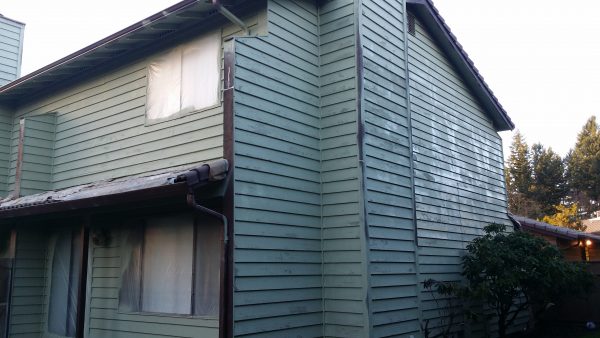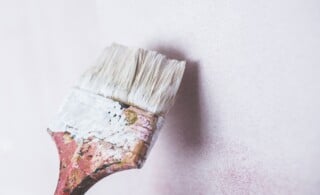
There are a number of ways to remove old coatings effectively and your particular job may require a combination of approaches to get the results you want. Review the methods explained here and see which ones best suit your project.
Scraping
This is a traditional effective approach for many flat surfaces from smooth masonry and hardboard to wood and ferrous metal. For maximum effectiveness, keep the scraper sharp and apply even pressure as you scrape in one direction, then at 90 degrees. Use shaped scrapers like triangle or oval shapes to get into corners and on rounded profiles. Take care not to gouge or score wood and be sure not to apply pressure when scraping hardboard.
For heavier scraping on hard or metal surfaces try a two-hands scraper. Feather sand all rough edges of remaining paint with medium grit sandpaper such as #100 grit to achieve a smooth finish. Wear goggles or face mask for eye protection, leather or work gloves to protect the skin and limit dust intake by wearing a protective mask or respirator. Scraping is less effective on rough surfaces such as stucco or cinder block.
Wire Brushing
A stiff metal hand brush works well on brick, stucco and other masonry. Used vertically it is also effective removing paint from wood shakes. Power wire brushing can be used on stubborn areas, but must be done with extreme care. Wear goggles or face mask for eye protection, leather or cloth work gloves to protect the skin, and limit dust intake with a protective mask or respirator.
Sanding
Areas that have been scraped should be smoothed with sanding. A power sanding tool like an electric belt sander is an option when the substrate is wood or steel. Do not attempt to power sand masonry, hardboard, aluminum or plastic materials.
Ready to start your Paint Removal?
Find ProsPower Washing
A high pressure plain water stream is effective in lifting old, loose paint. Never use harsh cleansers or bleach since they can infiltrate the substrates and inhibit paint performance. Hold the spray tip 6″ to 8″ from the surface. To prevent damage, spray at a horizontal or downward angle only, an upward angle may drive water behind siding and even lift siding off. Power washing is not recommended for soft woods like cedar and redwood.
Chemical Removal
Strong solvent-based removers work well on most oil-based and latex paints, primers, stains, and varnishes. Apply a heavy coat to a small area, about 2-3 square feet at a time, using a low-end natural bristle paint brush. Give it plenty of time to work as recommended by the manufacturer. Carefully remove the softened coatings using a putty knife or wooden blade and scrape the material into a cardboard carton. Reapply more stripper if needed and then clean the surface with wadded up paper toweling.
Do not use steel wool because it can discolor the treated surface. Use these chemical removers only on small vertical and horizontal face-up areas, such as trim and moldings. Do not use on face-down surfaces such as porch ceilings. Before using these products, clear the area of children and pets.
Cover floors and steps and remove plants, rugs and furniture. Dispose of all refuse after the job, carefully following manufacturer instructions. Wear goggles or face mask for eye protection; use chemical resistant gloves, long sleeve shirt and long pants to protect the skin; and protect breathing with a respirator designed for use with chemical solvents. There are low odor alternatives to the strong solvent removers, but they may take much longer, especially if the old coatings are thick and old.
Heat Gun
Old coatings such as paint and varnish can be removed with a heat gun, but special care is required for safety. A drop cloth should be placed on the ground under the entire work area and must be kept damp by periodic misting with a garden hose. Also lightly spray the area of the building where the coating is to be removed. As the old coating bubbles up and softens, carefully remove it with a putty knife. Place the hot softened coating into a metal container for disposal. Wear goggles or face mask for eye protection; use chemical resistant gloves, long sleeve shirt and long pants to protect the skin; and protect breathing with a respirator designed for use with heat gun paint removal.
 Creating a Kid’s Fantasy World With Themed Murals
Creating a Kid’s Fantasy World With Themed Murals  Lead Paint Common Sense
Lead Paint Common Sense  Painting Your Home Happy: How Color Choices Affect Your Mood
Painting Your Home Happy: How Color Choices Affect Your Mood  Exterior Painting Techniques
Exterior Painting Techniques  Choosing Exterior Paint Colors
Choosing Exterior Paint Colors 

Are You Familiar With This Topic? Share Your Experience.